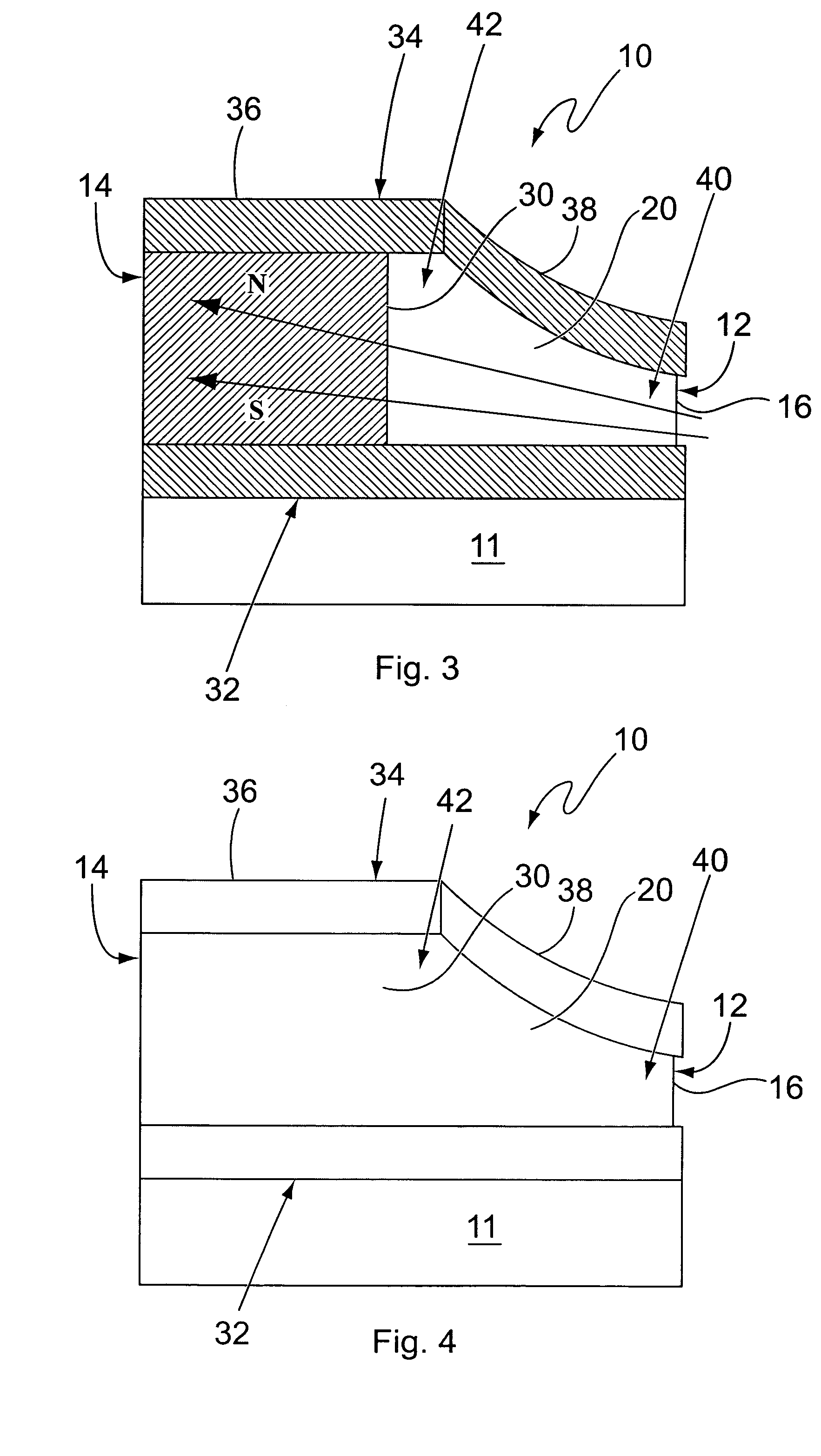Magnetically enhanced convection heat sink
a heat sink and magnetic enhancement technology, applied in the field of heat sinks, can solve the problems of major concern in the dissipation of heat from electrical and electronic systems and devices, affecting cost and performance in the electronic industry, and affecting the cooling effect of electronic devices, so as to enhance the convection cooling of electronic devices, enhance the flow of air, and no power consumption
- Summary
- Abstract
- Description
- Claims
- Application Information
AI Technical Summary
Benefits of technology
Problems solved by technology
Method used
Image
Examples
Embodiment Construction
[0019]With reference to the drawing, there is shown a magnetically enhanced convection heat sink 10 in accordance with a preferred embodiment of the invention for dissipating heat from a heat source 11 which may be an electronic device. The heat sink 10 comprises a heat sink member 12 and magnetic source 14. The heat sink member 12 includes a plurality of fins 16 arranged in parallel spaced apart relationship as shown. Each fin has major side surfaces 20. The fins are essentially thin sheets, as is customary with conventional, non-magnetically enhanced heat sinks, to provide large surface areas in contact with the air without requiring large mass. The thickness of the fins depends on the particular application taking into account the physical size of the heat sink, the heat flux through each fin, and the mechanical stress exerted on the fins. Thus, depending on the particular application for the heat sink, the fins may be of a foil thickness, or substantially thicker and more substa...
PUM
| Property | Measurement | Unit |
|---|---|---|
| boiling point | aaaaa | aaaaa |
| Curie temperature | aaaaa | aaaaa |
| paramagnetic properties | aaaaa | aaaaa |
Abstract
Description
Claims
Application Information
 Login to View More
Login to View More - R&D
- Intellectual Property
- Life Sciences
- Materials
- Tech Scout
- Unparalleled Data Quality
- Higher Quality Content
- 60% Fewer Hallucinations
Browse by: Latest US Patents, China's latest patents, Technical Efficacy Thesaurus, Application Domain, Technology Topic, Popular Technical Reports.
© 2025 PatSnap. All rights reserved.Legal|Privacy policy|Modern Slavery Act Transparency Statement|Sitemap|About US| Contact US: help@patsnap.com



